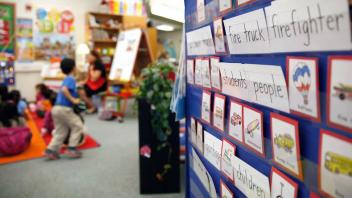Introduction
Semantic maps (or graphic organizers) are maps or webs of words. The purpose of creating a map is to visually display the meaning-based connections between a word or phrase and a set of related words or concepts. Semantic maps help students, especially struggling students and those with disabilities, to identify, understand, and recall the meaning of words they read in the text.
Learning to create these maps aligns with three of the ELA Common Core State Standards:
- CCSS.ELA-Literacy.CCRA.L.3 Apply knowledge of language to understand how language functions in different contexts, to make effective choices for meaning or style, and to comprehend more fully when reading or listening.
- CCSS.ELA-Literacy.CCRA.L.4 Determine or clarify the meaning of unknown and multiple-meaning words and phrases by using context clues, analyzing meaningful word parts, and consulting general and specialized reference materials, as appropriate.
- CCSS.ELA-Literacy.CCRA.L.5 Demonstrate understanding of figurative language, word relationships, and nuances in word meanings.
Teaching students to use semantic maps
You can provide your students with direct instruction on how to use semantic maps. Below is an example of a step-by-step set of directions, which can be especially beneficial for struggling students.
- Pick a word you don’t know from a text you are reading and mark the word. If you’re using digital text, you can highlight, bold, or underline the word.
- Use a blank map or begin to draw a map or web (either on paper or using an online tool).
- Place the word you don’t know in the center of the map.
- Pronounce the word. If necessary, use an online dictionary with audio to help you.
- Read the text around the word to see if there are related words you can add to your map. If you’re using digital text, you can get the computer to read the text to you using the text-to-speech function (if necessary).
- Use an online dictionary or online thesaurus to look up the word and find a definition.
- Find words and phrases that fit with the meaning. Select pictures/images (online or from available resources) or draw pictures that fit with the meaning.
- Add these words, phrases, or images to your semantic map.
- If you’re working online, print out the map.
- Read the text again, applying the meaning of the word to the text.
- Share and compare your map with your classmates.
With direct instruction and repeated practice, struggling students will find that using semantic maps is a very good way of expanding their vocabulary.
Integrating technology
There are many technology tools that can help students create semantic maps (including thinking maps, mind maps, bubble maps, and concept maps). You might want to check out Webspiration , Bubblus , Gliffy , Thinklinkr , Glinkr , Creately , Diagrammr , and Mindomo .
In addition, many websites (including those listed below) provide information about different types of graphic organizers that you can use as a starting point as you customize your instruction to meet your students’ needs.
A semantic mapping lesson
Mr. Green’s Grade 5 class is studying American presidents. He wants his 25 students to understand how the personality of each president may have impacted the president’s political career. Although some students have no difficulty decoding, several students struggle to recognize or remember word meanings. Mr. Green is reintroducing the use of semantic maps to support vocabulary development.
The specific objective of the lesson is to have students expand their vocabulary by creating semantic maps to represent the different characteristics of a personality. Mr. Green plans to model this strategy first, and students will then have an opportunity to practice the strategy themselves. The unit will culminate in the creation of multimodal president cards — one component of which will be a semantic map — which will be posted on the class website.
As part of his ongoing practice, Mr. Green will use his interactive whiteboard to demonstrate and involve students in creating the maps. To gather information for vocabulary development, he will access a website titled Abraham Lincoln’s Personality .
Mr. Green’s lesson plan is outlined below. It is organized into three sections to show the steps he will take before reading, during reading, and after reading.
Lesson plan
Before Reading
- Introduce the unit’s goals, which are to learn about presidents and create multimodal president cards with new vocabulary.
- Review and discuss three different types of semantic map.

- Display and discuss the website on Abraham Lincoln’s personality.
- Invite students to fill out the semantic map with words, definitions, and images.
- Save the map on the class website.
During Reading
- Continue practicing using semantic maps.
- Have groups create new multimedia maps.
- Have students share and discuss new vocabulary in maps.
After Reading
- Have students begin making the multimodal president cards.
- Set the criteria for these cards: the name of the president, vocabulary words, definitions, images, and sentences.
More teacher resources on semantic mapping
This article draws from the PowerUp WHAT WORKS website, particularly the Semantic Mapping Instructional Strategy Guide . PowerUp is a free, teacher-friendly website that requires no log-in or registration. The Instructional Strategy Guide includes a brief overview that defines semantic mapping and an accompanying slide show; a list of the relevant ELA Common Core State Standards; evidence-based teaching strategies to differentiate instruction using technology; a case story; short videos; and links to resources that will help you use technology to support instruction in semantic mapping. If you are responsible for professional development, the PD Support Materials provide helpful ideas and materials for using the resources on semantic mapping. Want more information? See PowerUp WHAT WORKS .
